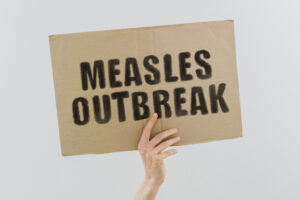FDA has been sued, again. For a missed deadline, again. But in this case, I believe we may be better off giving FDA a pass or a work-around. Here’s why. Both FDA and USDA have been sued in the past by consumer groups for missing deadlines for rulemaking. This time it’s The Center for Food Safety (CFS) and the Center for Environmental Health (CEH) filing suit on FDA for failure to meet the FSMA deadline to create a high-risk foods list, for which increased traceability recordkeeping would be required – but how much will that really help us? I am a very strong advocate of supply-chain traceability systems, and anyone working in the food industry knows that “one up and one back” is not enough to understand and control supply chain risks. However, FDA does not have the authority to require full supply chain pedigree traceability. While the prior lawsuits did exert pressure on FDA to meet other FSMA deadlines and on USDA to propose a GMO-labeling rule, the spate of lawsuits also creates a great deal of busy work for the agencies, which could have been applying that time in much more beneficial ways. And this time, I think it’s more than just busy work that is at issue. I think there’s a lot more behind the scenes than the consumer groups understand. FDA did, in fact, fulfill the first step of the FSMA mandate around traceability back in 2011 – assigning IFT with the task to conduct food product traceability pilots. From these, recommendations were made for areas in which improvements could be implemented to reduce traceback time and ensure the accuracy of information. The next step was to be the designation of high-risk foods to which such actions would apply – and this is the focus of the lawsuit. But, is publishing a high-risk list actually good or bad for public health? Would it really contribute to food safety? Or, would the creation of a high-risk list: Cause those on the high-risk list to spend a great deal of time trying to get off the list. Cause those not on the list to be more complacent. No producer wants to be on the “Dirty Dozen” foods list, identified in an article on “Foods to Avoid,” listed as “Most Recalled Foods” – or called out on a “high-risk foods” list. Not only do such “black lists” put off consumers, they create a heyday for the media – both the news outlets and social media – which, all too often, focus more on sensationalism than on facts. So, I would see businesses spending valuable time working to get off the high-risk list – time that could better be devoted to actual food-safety initiatives. To look at the other side, if your food has been designated as lower risk – simply by not being on a high-risk list, the natural tendency is to breathe a sigh of relief, then figure your current food-safety efforts are good enough, so you can devote your time elsewhere and relax – maybe. Neither of these is good for the consumer. But let’s take it a step further. How, exactly, should FDA define a high-risk food? By a consumer group’s list? By number of recalls? By amount of processing? And is it a static or an evolving list? Can foods be moved on and off? What about frozen foods? For years, there seemed to be no recognized risk, but in recent years, frozen produce has repeatedly been associated with Listeria. How about peanut butter? It was “safe” for years, but there have been numerous large recalls in recent years including the infamous PCA. So, how long would the high-risk foods list end up being … so long that it becomes meaningless? In fact, I would say that it should be a long list: that all food should be considered as potentially high risk. In fact, the exact same food could be high-risk or low-risk; e.g., the same IQF corn used in soup would be low risk, but in a salad, it would be high risk. It seems that IFT’s pilot team is in agreement with such an assessment, as the first of its recommendations stated: “IFT recommends that FDA establish a uniform set of recordkeeping requirements for all FDA-regulated foods and not permit exemptions to recordkeeping requirements based on risk classification.” So, what if we take a different approach. What if we look at it holistically, set risk-based criteria – based on the processes the food undergoes, the preventive controls implemented, the existence of a food safety plan, and the reasonably foreseeable use of the product. Hmmm … sounds to me like that’s the implementation of the seven major rules of FSMA. To me this is both logical and the most cost effective. So, what if we give FDA that pass, allow the agency to create that work-around, avoiding a list but continuing to focus inspections and oversight activity on the establishment’s risk-based food-safety applications and outcomes. I honestly think we should back off on this one. I think that FDA probably has it right – creating the list would not make a difference to food safety and would drive scarce industry resources into a frenzy of “how do I get off the high risk list.” But I would add two caveats: the rule does provide the ability for FDA to put more pressure on imported foods that are designated as high risk. So, again, a risk-based approach to imports could work here as well. The second goes back to another statement made by IFT in its Product Tracing Pilots recommendations: “While these recommendations are actions FDA can take, those in the food supply chain should view these recommendations in the context of the nature of improvements that may be expected of them.” Those recommendations have been out since 2012, perhaps the focus should be place there – by both FDA and the industry itself. About The Acheson Group (TAG) Led by Dr. David Acheson, TAG is a food safety consulting group that provides guidance and expertise worldwide for companies throughout the food supply chain. With in-depth industry knowledge combined with real-world experience, TAG’s team of food safety experts help companies more effectively mitigate risk, improve operational efficiencies, and ensure regulatory and standards compliance. Learn more at: www.AchesonGroup.com





